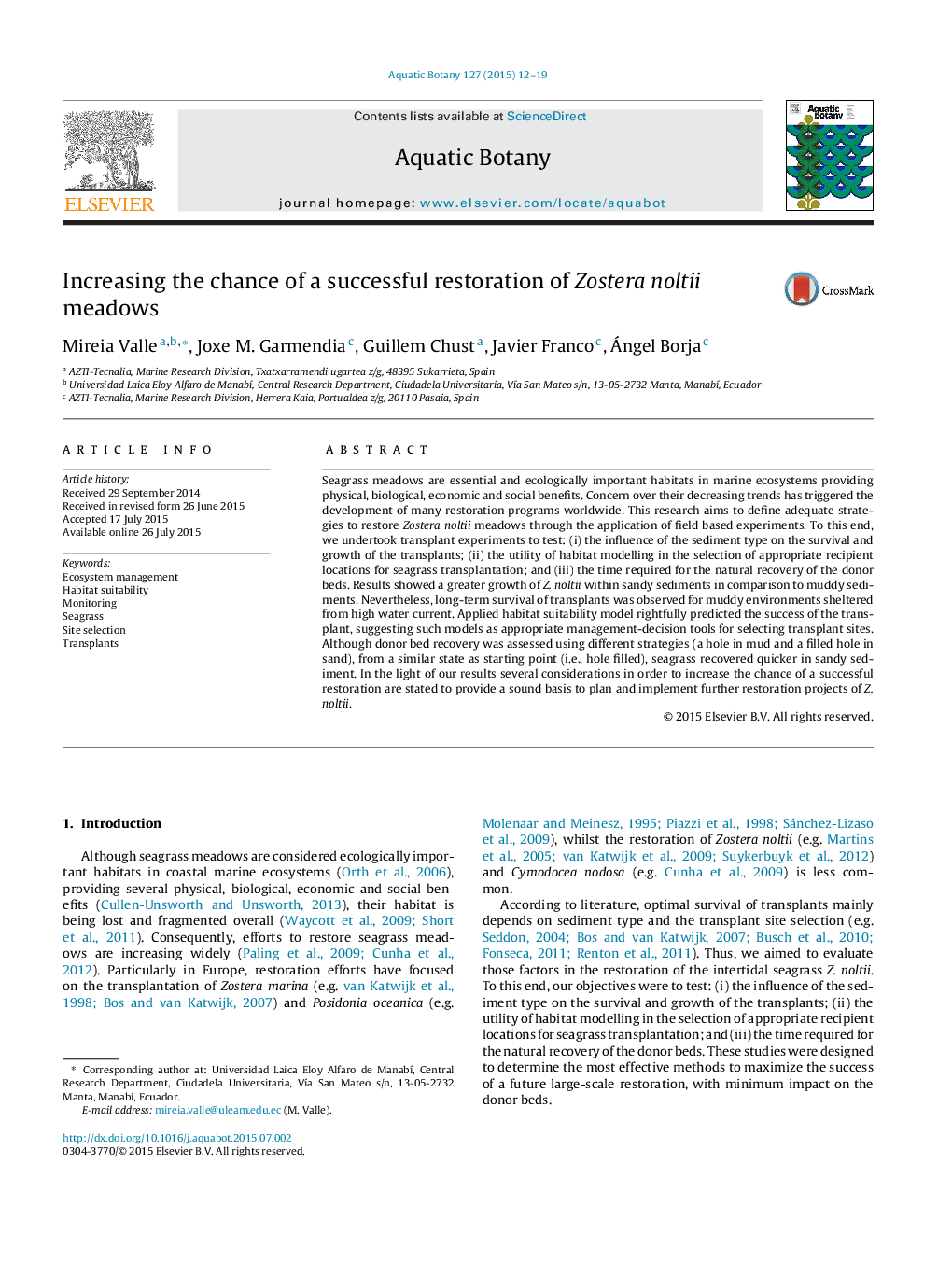| Article ID | Journal | Published Year | Pages | File Type |
|---|---|---|---|---|
| 6381706 | Aquatic Botany | 2015 | 8 Pages |
Abstract
Seagrass meadows are essential and ecologically important habitats in marine ecosystems providing physical, biological, economic and social benefits. Concern over their decreasing trends has triggered the development of many restoration programs worldwide. This research aims to define adequate strategies to restore Zostera noltii meadows through the application of field based experiments. To this end, we undertook transplant experiments to test: (i) the influence of the sediment type on the survival and growth of the transplants; (ii) the utility of habitat modelling in the selection of appropriate recipient locations for seagrass transplantation; and (iii) the time required for the natural recovery of the donor beds. Results showed a greater growth of Z. noltii within sandy sediments in comparison to muddy sediments. Nevertheless, long-term survival of transplants was observed for muddy environments sheltered from high water current. Applied habitat suitability model rightfully predicted the success of the transplant, suggesting such models as appropriate management-decision tools for selecting transplant sites. Although donor bed recovery was assessed using different strategies (a hole in mud and a filled hole in sand), from a similar state as starting point (i.e., hole filled), seagrass recovered quicker in sandy sediment. In the light of our results several considerations in order to increase the chance of a successful restoration are stated to provide a sound basis to plan and implement further restoration projects of Z. noltii.
Related Topics
Life Sciences
Agricultural and Biological Sciences
Aquatic Science
Authors
Mireia Valle, Joxe M. Garmendia, Guillem Chust, Javier Franco, Ángel Borja,
